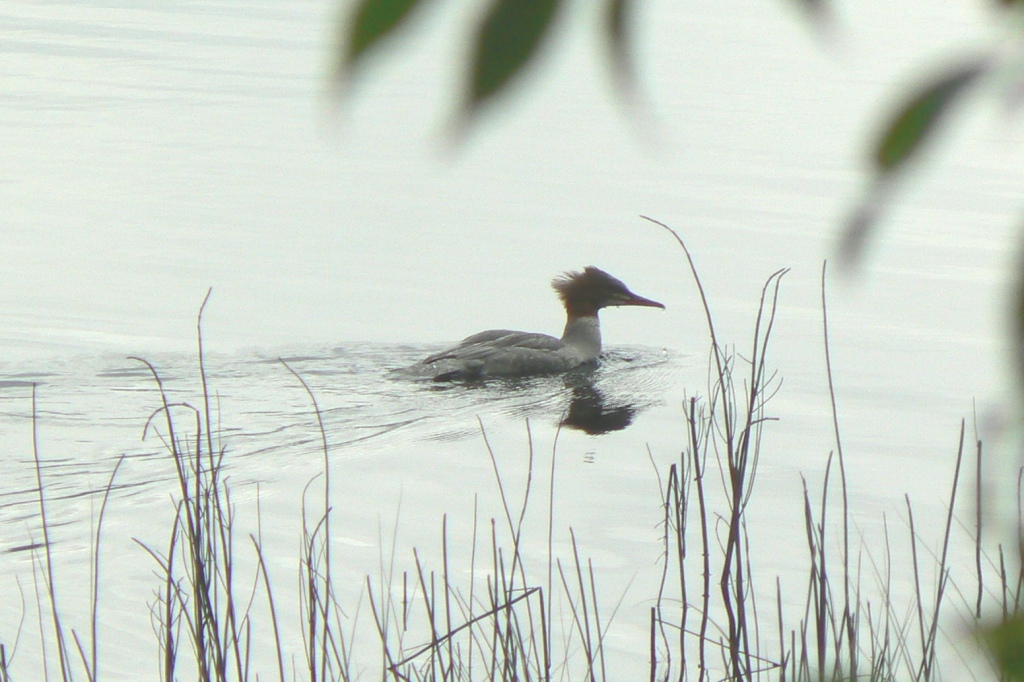
[228] Mergus merganser, Goosander
Mergus serrator, Red-breasted Merganser
Introduction
Mergus merganser and Mergus serrator are two species of sea ducks known as sawbills, rarely seen in England and Wales but a little more common in Scotland.
Mergus merganser is known as the Goosander in Eurasia and the Common Merganser in North America.
Mergus serrator is the Red-breasted Merganser.
Taxonomy
Kingdom – Animals
Phylum – Chordates
Class – Aves (Birds)
Order – Anseriformes (Waterfowl)
Family – Anatidae (Ducks, Geese and Swans)
Subfamily – Anatinae
Tribe – Mergini (Sea ducks)
Genus – Mergus
Scientific Names – Mergus merganser, Mergus serrator
The subdivisions within Anatidae are uncertain.
Names
The Latin word mergus was an unspecified waterfowl or diver and the Late Latin merganser comes from mergus and anser, meaning goose as we saw in [026] Greylag. Goosander, derived from goose and gander, has been used in English for this bird for four hundred years.
Sawbills
Within the tribe of sea ducks, Mergini, most species dive for molluscs and crustaceans on the sea bed. The Mergus species also catch and eat fish and have serrated bills to hold the fish. Hence, these are called sawbills.
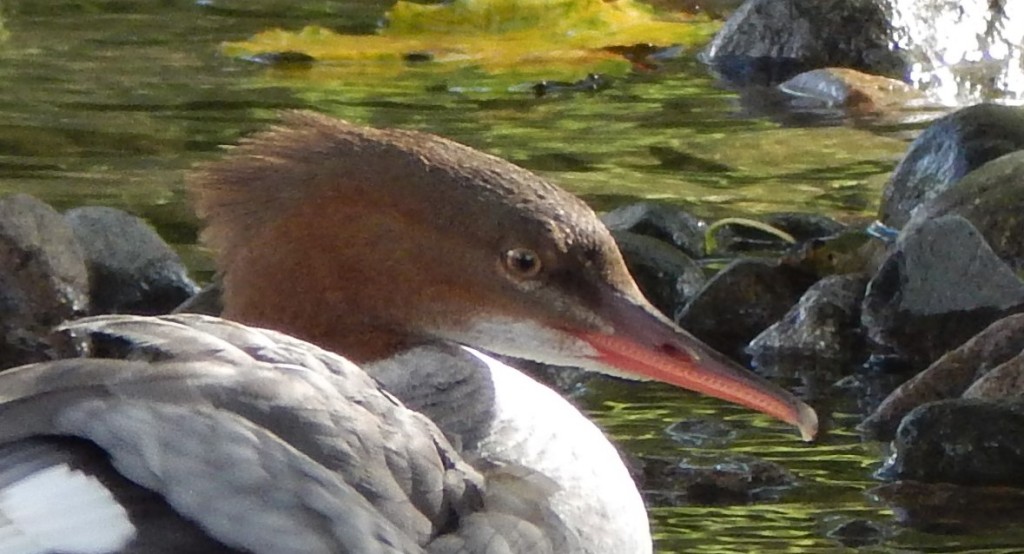
There are only five species in the genus Mergus and the other three are extinct or almost extinct. The closely related Smew (See below) is also a sawbill.
Goosander
All the species in the genus Mergus have a crest of long feathers on their heads but these are not usually displayed. The long thin red bill has a downturned point.
The adult male in breeding plumage has a white body, a dark head with an iridescent green colour and dark back.
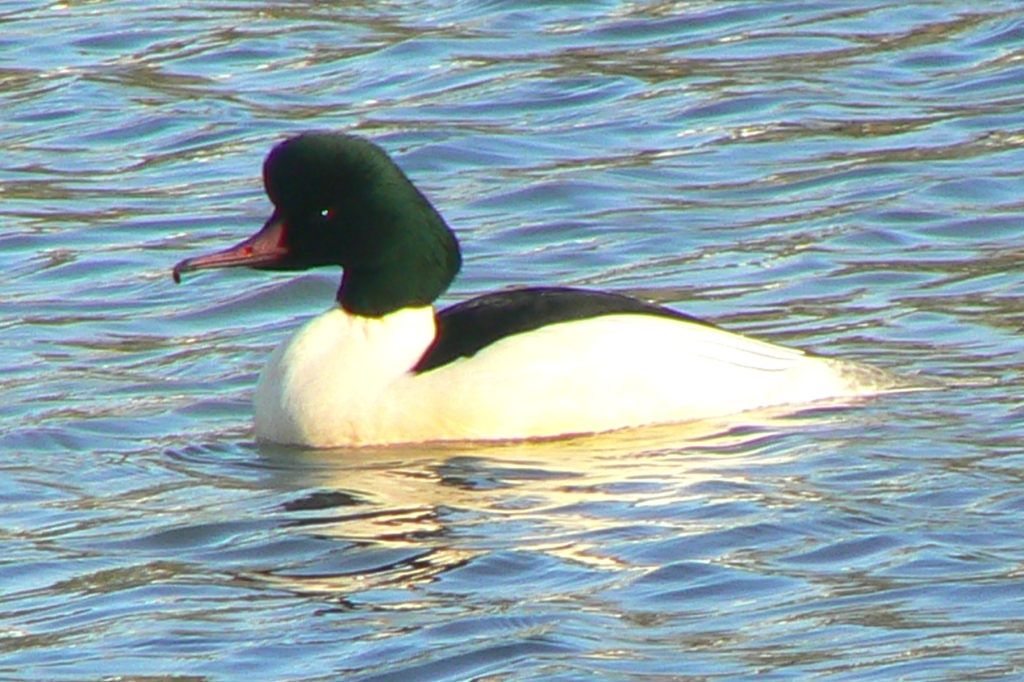
Females and males in eclipse are mostly grey with a dark brown head.
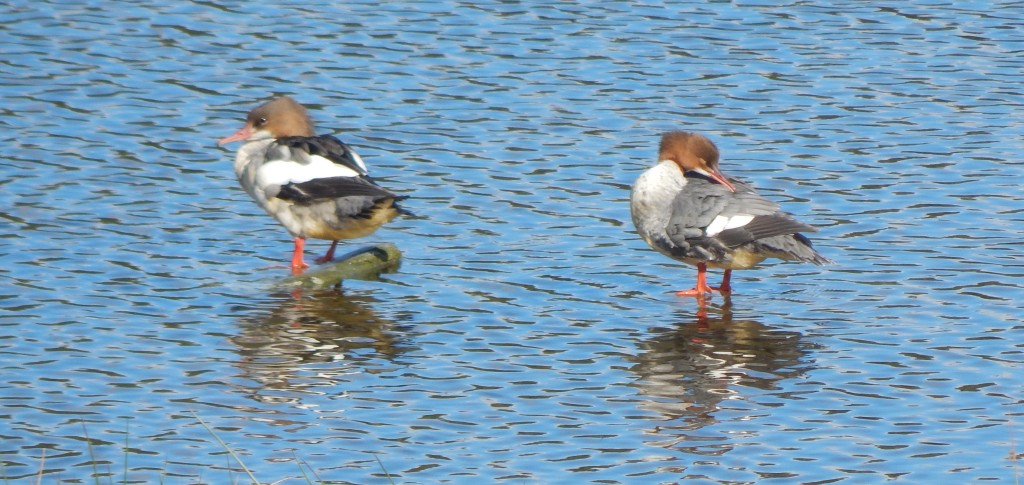

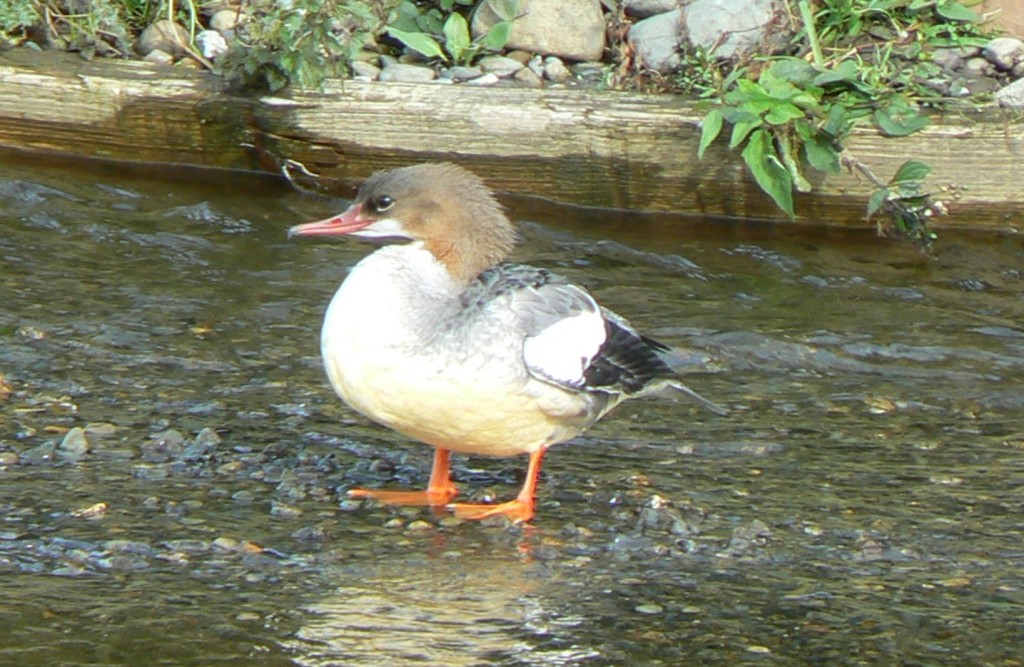





They do eat fish but will also eat molluscs, crustaceans and sometimes small birds or mammals.
Red-breasted Merganser
These are similar to Goosanders in appearance but the male lacks the full white breeding colour. His body is more coloured with a red breast.
Females are more difficult to distinguish from the Goosander but again the red breast is significant. (For the Goosander it is white.)



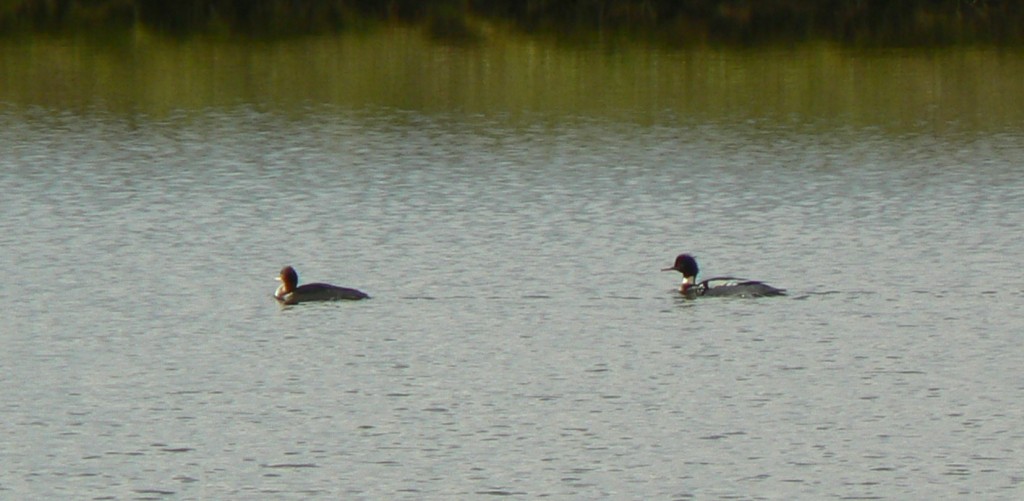

I don’t have any good quality pictures. You are unlikely to get close to these birds,
Habitat
Mergus merganser is found in northern Eurasia and North America and generally prefers river habitats. In the UK they are usually restricted to Scotland.
In England they are rare winter visitors to some isolated lake locations. We have had them very rarely on the lakes in our local town park.

Mergus serrator has a similar distribution but is usually seen at sea or in coastal locations. They do not come South to England in winter.
Other Notes
I’m hoping this post will survive. So far Microsoft Word has lost it completely twice. The second time at least its backup system seemed to work.
See also
Most of the other sea ducks live in the Arctic North and spend their lives at sea. Scoters and Eiders may be seen out over the sea or closer around the Shetlands. Mergini also includes [059] The Goldeneye and the Smew, Mergellus albellus, a very close relative, an even rarer occasional winter visitor to Britain.
The Smew is sometimes included within Mergus but is probably more closely related to the Goldeneye. Their normal habitat is further North than the mergansers but occasionally one or two may winter somewhere in the UK. The male in breeding plumage is almost entirely white. I have seen one or two winter visitors at the Cotswold Water Park but they keep their distance at the far side of lakes – too far away for useful pictures.
